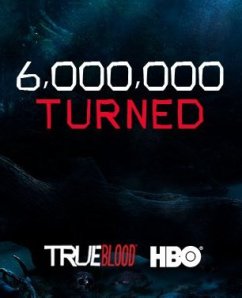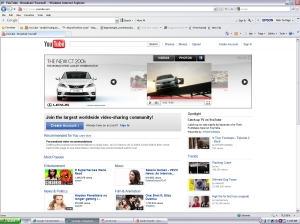Week 7
B) Lovink argues that: “No matter how much talk there is of community and mobs, the fact remains that blogs are primarily used as a tool to manage the self”. Discuss this argument giving an example of a blog.
I would have to say that I disagree with many of Geert Lovink‘s assertions about blogging in Blogging, The Nihilistic Impulse. Whilst in many cases it is true that “blogging relates to diary keeping” (6) and that blogs are often used to fulfill “the need to structure one’s life, to clear up the mess, to master the immense flows of information” (Lovink, 2007:28), Lovink’s argument that blog content contains “high degrees of irrelevance” (4) is outdated.
It is clear that the description of blogs as a sort of “public diary” (6) is not unfounded. Blogs can certainly be a tool to manage the self, and there are many examples of blogs which serve precisely this function. Indeed, as Lovink points out “blogs are part of a wider culture that fabricates celebrity on every possible level” (28). A blog which I think demonstrates this is celebuzz.com, which is a blog about the latest celebrity gossip. The site has a ‘Celebrity Bloggers’ section, which is used by celebrities, such as Kim Kardashian, as a means of self-promotion.
This role played by blogs is not, I would argue, necessarily a negative phenomenon. I like the idea of a “‘technology of the self'” (6); of having a space in which we can express ourselves and neatly collate our interests. For example, I have an account with the music blog The Hype Machine (I’ve just worked out how to display a Hype Machine widget on my blog, so have a look) which allows me to organise and write about my favourite music.
This comparison of blogging with diary writing can similarly be related to Twitter. Often, this social networking outlet is used in a constructive manner, not inane and narcissistic representation of our self-obsessed age, but a potential learning tool for those who wish to use it in such a way.
However, Lovink’s overly critical analysis of blogs neglects to mention their function as an intellectual device in his assertion that
“What is blogged is the relentless uncertainty of the everyday” (29)
Not all blogs have a “glossy personality-driven approach” (4) as Lovink suggests and it is untrue that “for most academics, blogs are irrelevant as they don’t count as publications” (4). For instance, recently my cousin Alex had an interview with Google for an interniship. Afterwards, he excitedly tweeted and posted on Facebook:
“Google interview went well (I think). He actually referenced several of my blog posts, I was impressed and flattered”
Now, being a self-professed Computer Science geek, my cousin does more programming than he does writing, so he uses his blog in one sense as a “‘technology of the self'” (6), but also as an academic mechanism; a learning tool for others (his blog is very technical ‘Computer-Sciencey’ material, probably completely irrelevant stuff for most of us, but nevertheless here is the link so you can see what I mean). This illustrates the potentially academtic nature of blogs, and way in which they may indeed be “count[ed] as publications” (4), or at the very least something tantamount to a publication.





